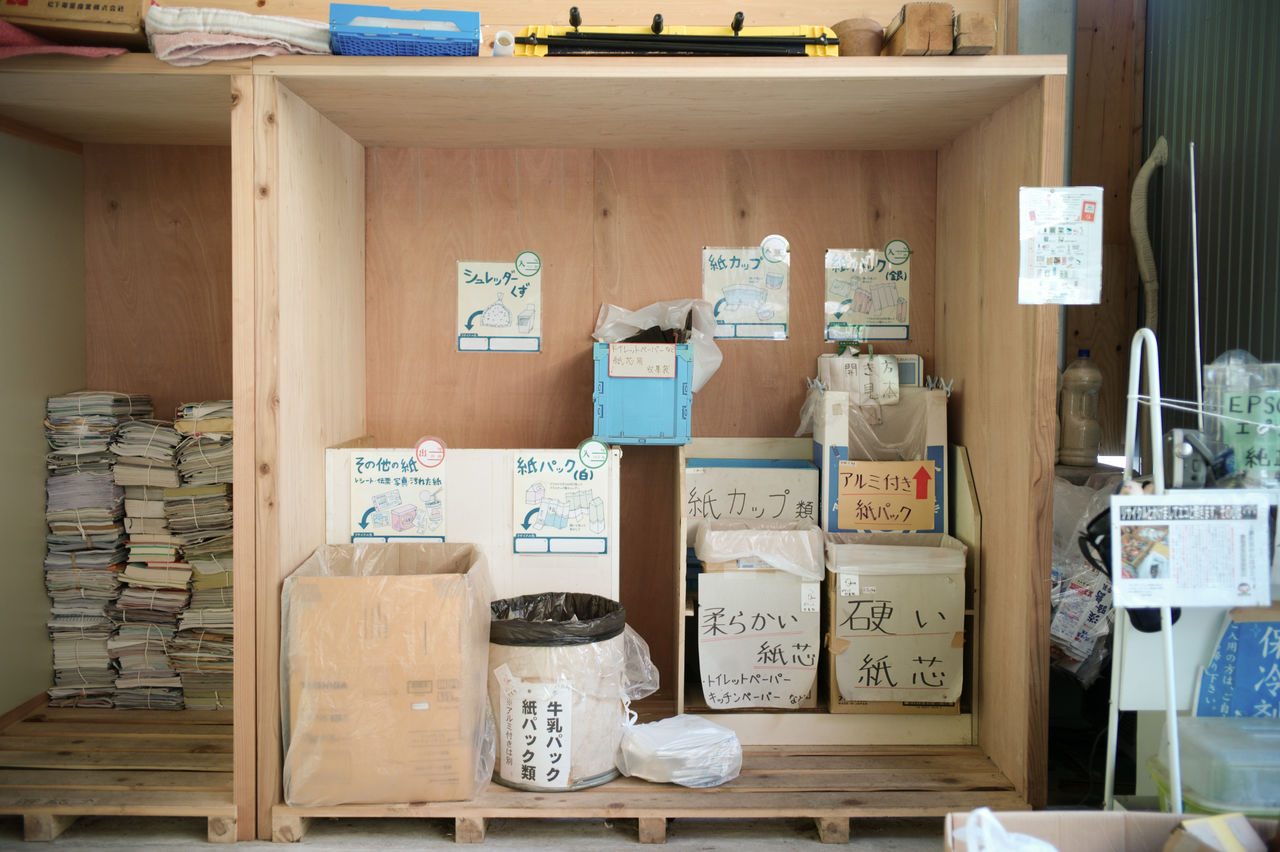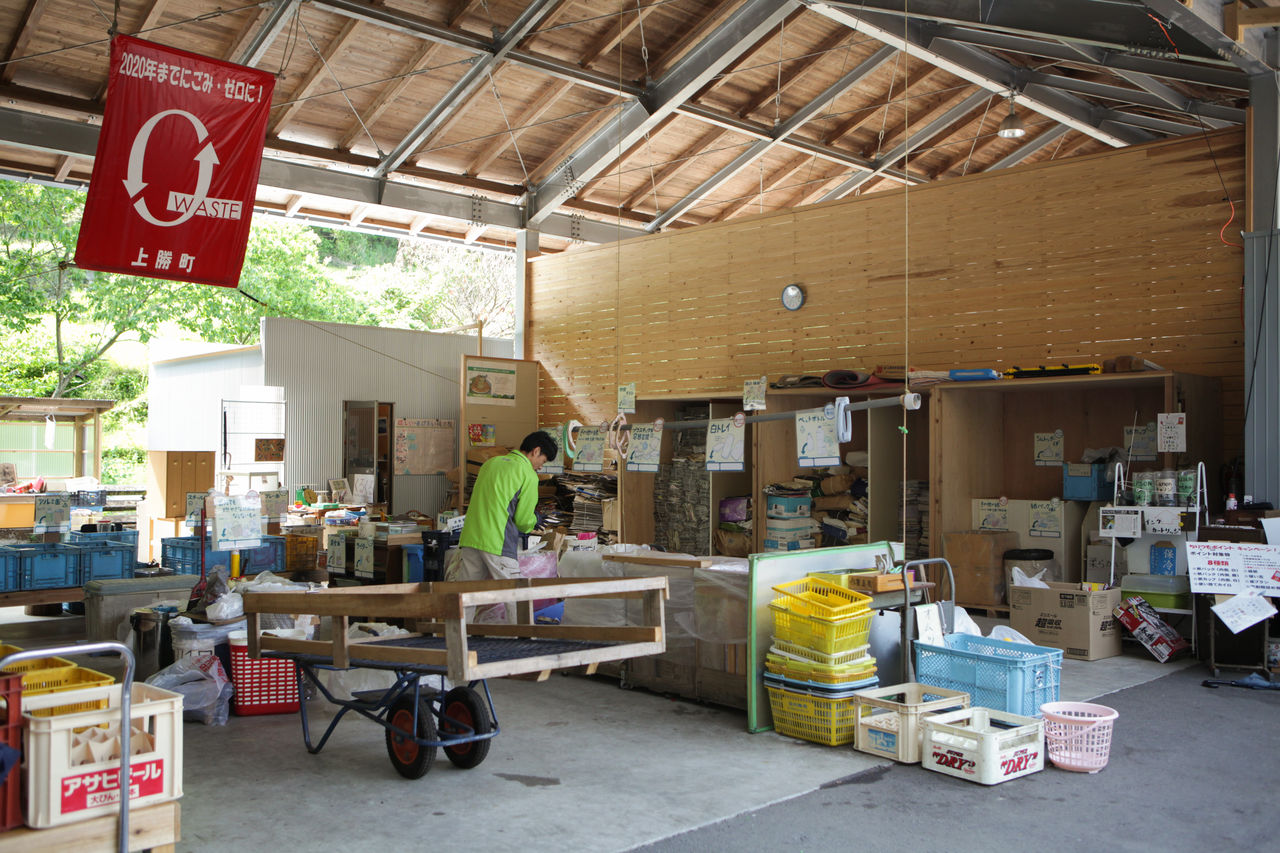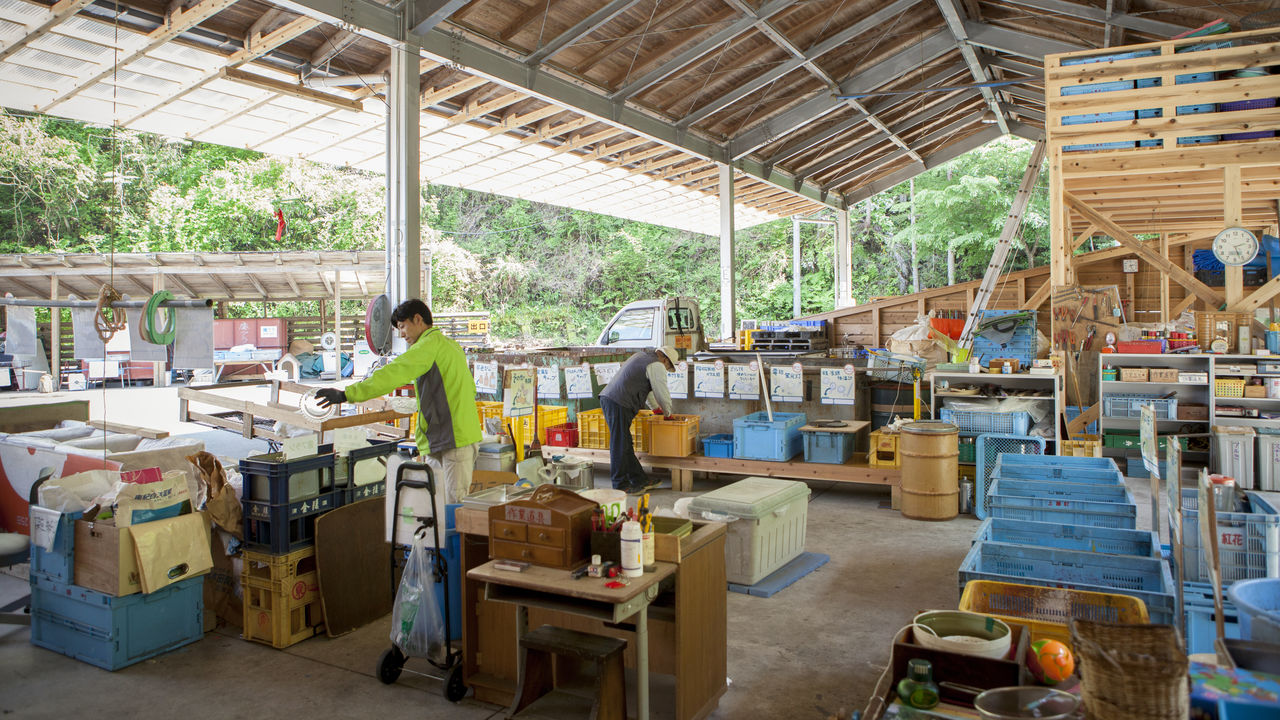
The Kamikatsu Zero Waste Campaign: How a Little Town Achieved a Top Recycling Rate
Guideto Japan
- English
- 日本語
- 简体字
- 繁體字
- Français
- Español
- العربية
- Русский
The town of Kamikatsu is located near the center of Tokushima Prefecture, along the upper reaches of the Katsuura River, about an hour’s drive from the capital city Tokushima. There is little level ground here: forested mountains account for 85% of the total land area. A population of 1,580 resides in some 800 households, gathered into 55 communities of various sizes that dot the landscape at altitudes ranging from 100 to 800 meters.
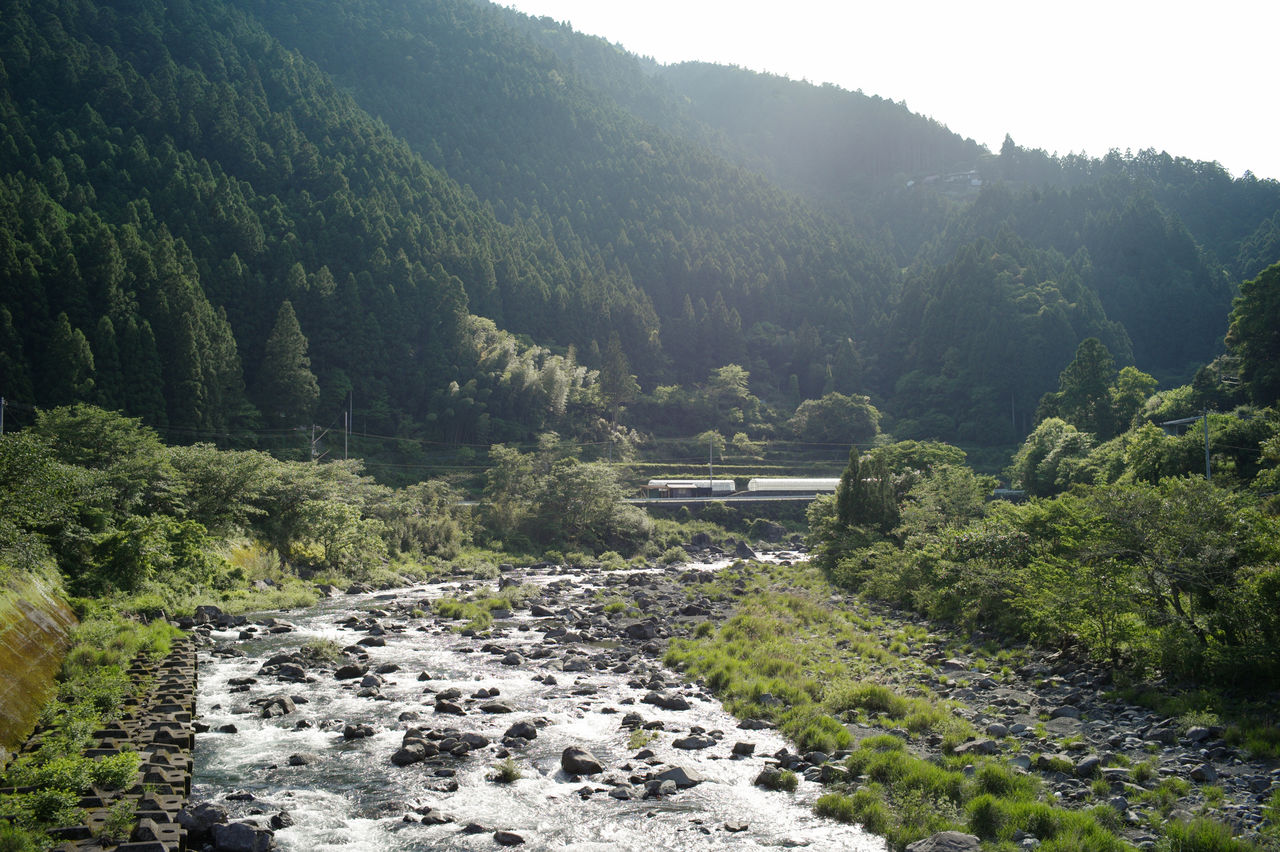 No big buildings, but plenty of lush natural beauty.
No big buildings, but plenty of lush natural beauty.
In 2003, Kamikatsu set itself a goal of eliminating waste by 2020 without resorting to incinerators or landfills, thus becoming the first municipality in Japan to promulgate a “Zero Waste” policy. With 2020 just around the corner, we spoke with Sakano Akira, the fourth chair of Zero Waste Academy, the NPO which has promoted Zero Waste in Kamikatsu, about how the town is doing in its pursuit of the goal.
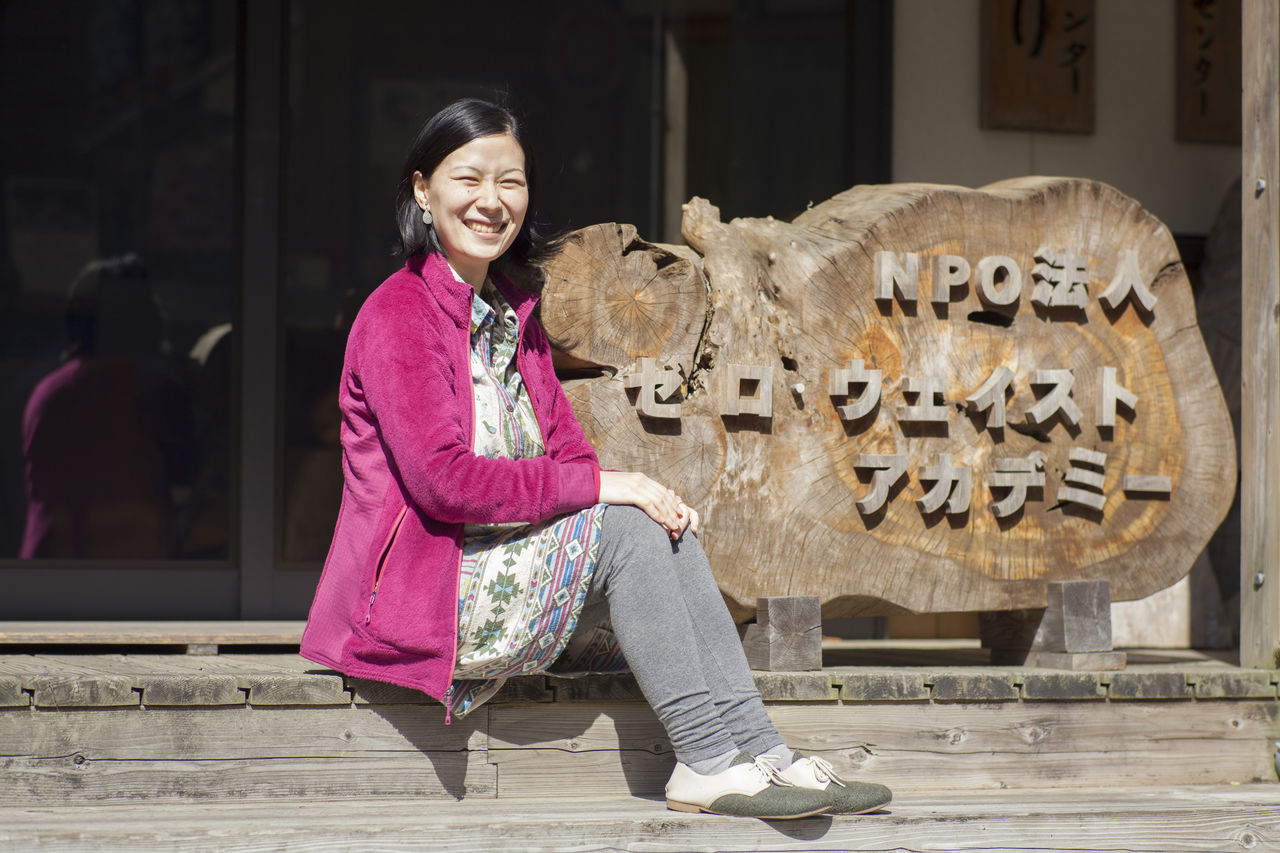 Sakano Akira describes the activities of her NPO, Zero Waste Academy, and the present situation in Kamikatsu.
Sakano Akira describes the activities of her NPO, Zero Waste Academy, and the present situation in Kamikatsu.
When Japan Overflowed with Waste
For all intents and purposes, Japan was a recycling-oriented society up until the 1950s, with greater percentages of waste being recycled than at present. As the country’s postwar economic boom began, however, factories began discharging large volumes of industrial waste, and urban development sites similarly began producing large amounts of construction debris. Waste volumes in Japan increased approximately fivefold in 20 years, from 8.9 million tons in 1960 to 43.9 million tons in 1980. (According to the Japanese Ministry of the Environment’s annual report Waste Disposal in Japan, total waste in 2016 was 43.2 million tons, enough to fill the Tokyo Dome baseball stadium some 116 times over.) To treat all of this waste, municipalities large and small across Japan invested large amounts of tax money in the building of incinerators. The country was hard-pressed to devise means for waste collection fast enough to keep up with the need.
Since the 1980s, however, fewer local governments have continued the practice of treating waste by burning garbage out in the open. Serious efforts at waste management began in Kamikatsu as well in the 1990s. Hibigaya Waste Station, the present-day symbol of the Kamikatsu Zero Waste campaign, is said to stand on the site of what had previously been a public-sector “outdoor incinerator.”
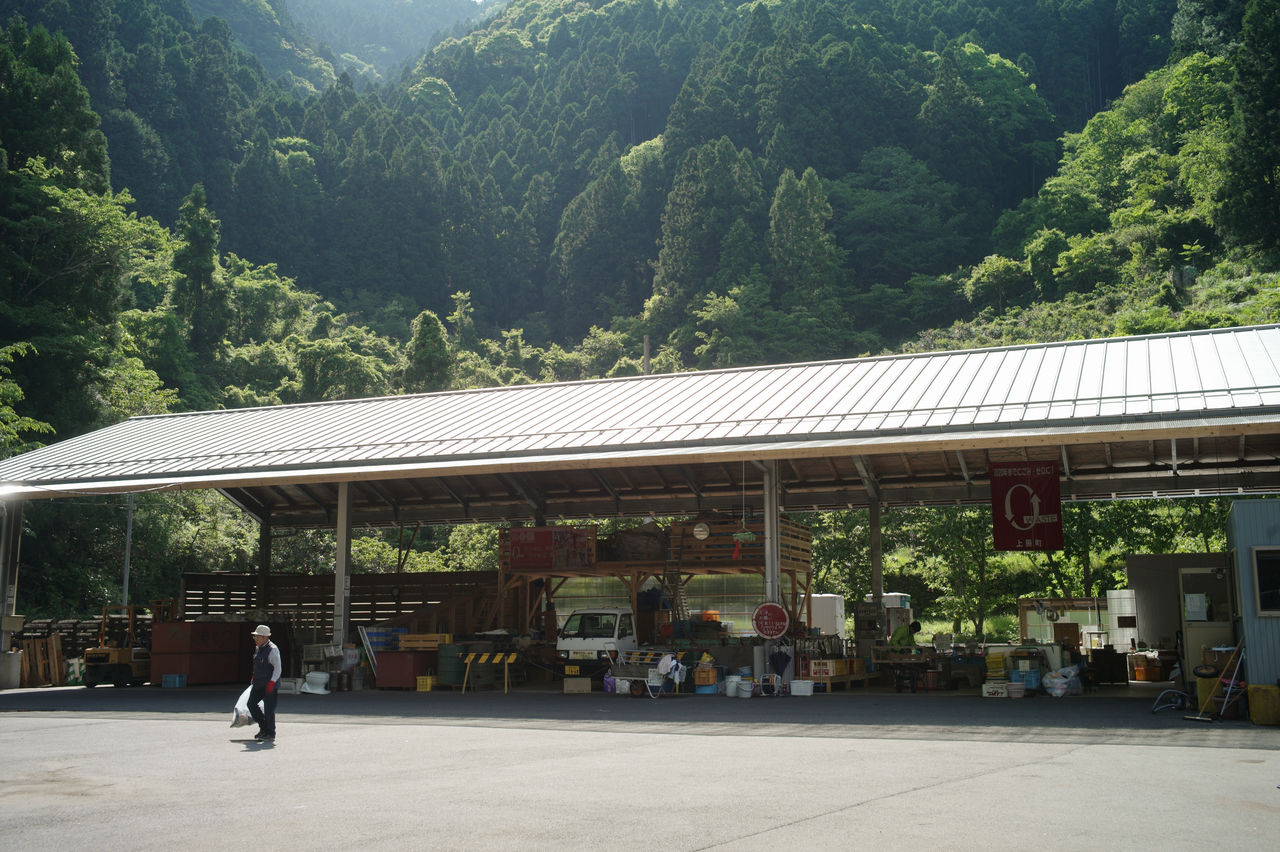 Hibigaya Waste Station is currently operating from temporary structures while being rebuilt.
Hibigaya Waste Station is currently operating from temporary structures while being rebuilt.
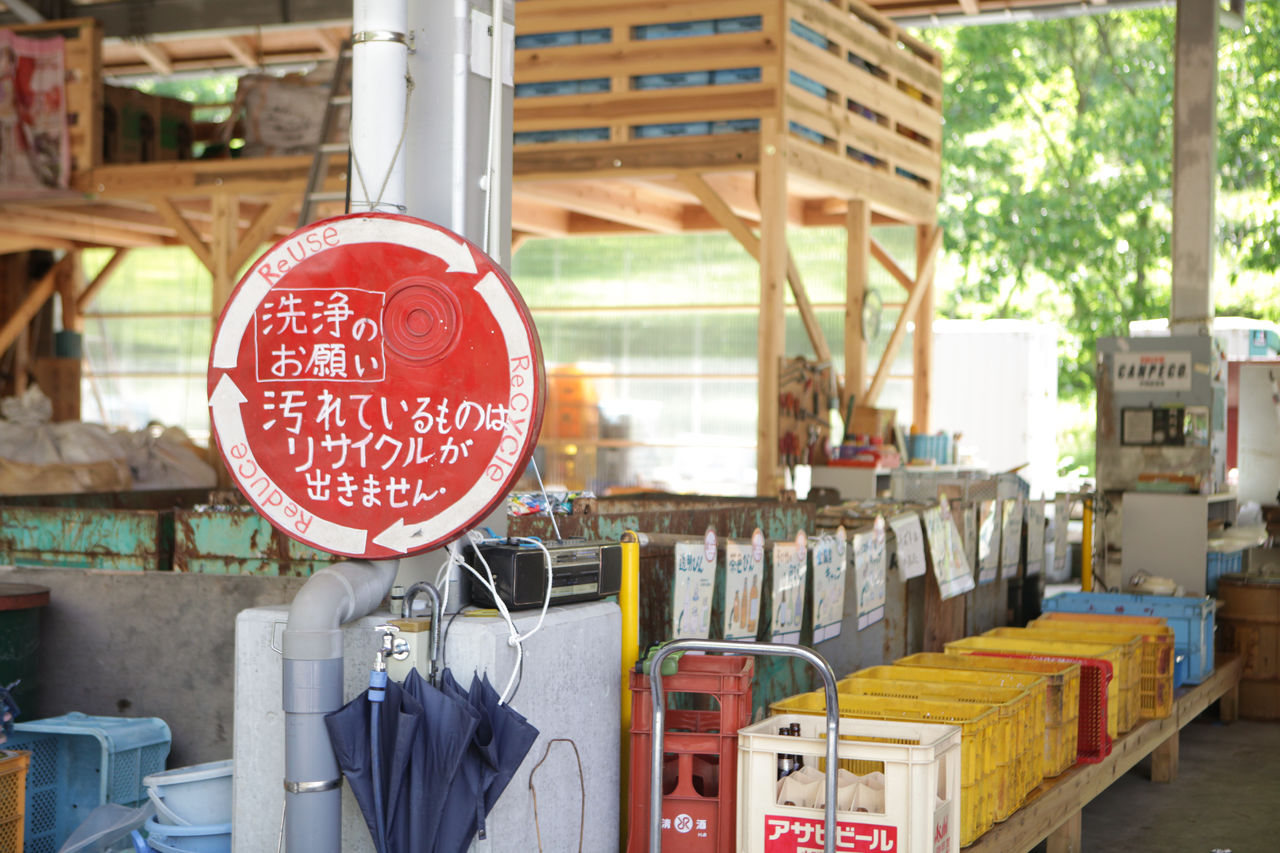 In the interior of the Waste Station, practically all of the signs and other fixtures are crafted from recycled materials.
In the interior of the Waste Station, practically all of the signs and other fixtures are crafted from recycled materials.
The First Step: Composting Raw Household Garbage
Given that Kamikatsu’s 55 hamlets are scattered across a wide area, it would have been very expensive to purchase garbage trucks to make pickups at all of these places, and then to incinerate the collected waste. Realizing this, in 1994 the local government drafted a Recycling Town Project plan and began brainstorming ways to reduce waste.
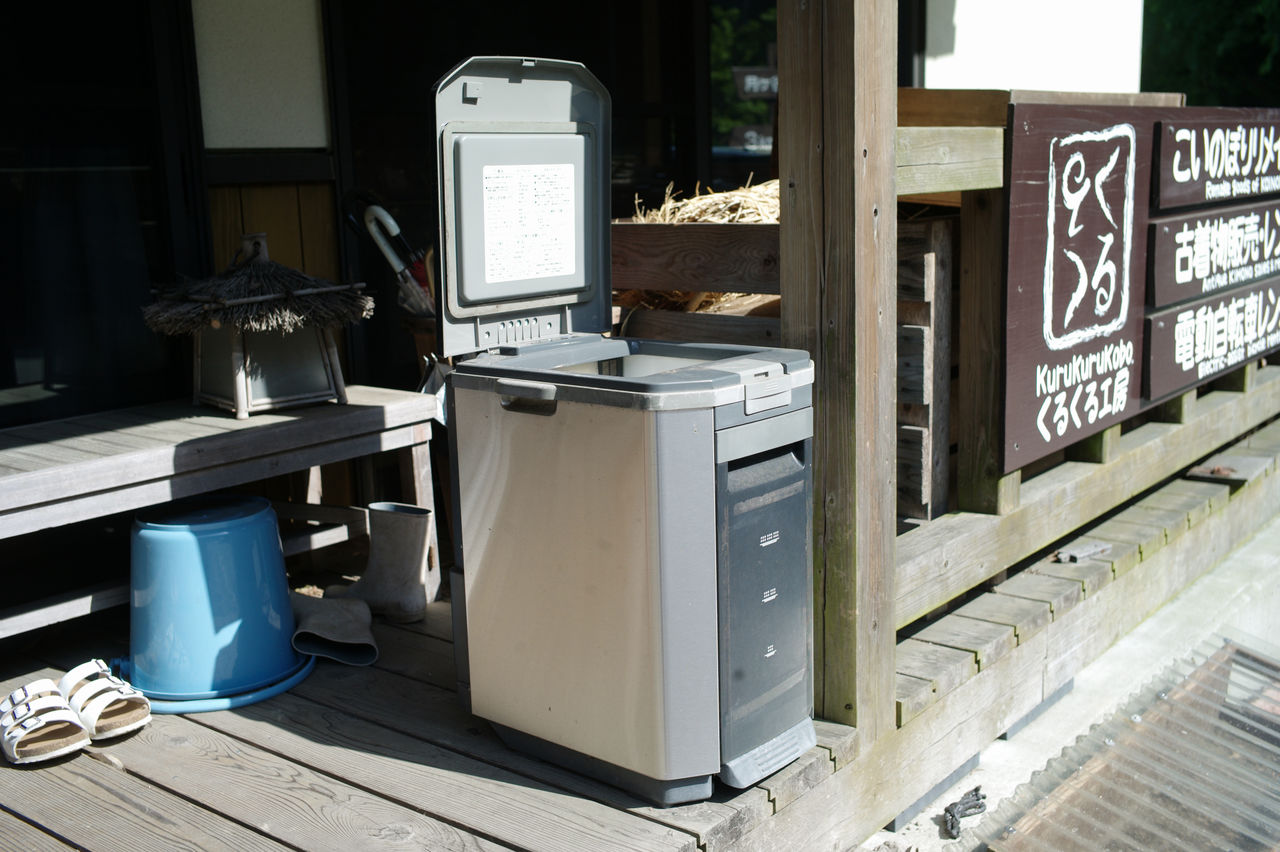 Microorganisms decompose raw garbage in this household processor.
Microorganisms decompose raw garbage in this household processor.
A study of the composition of the waste and the volumes generated revealed that raw garbage accounted for the largest share by yield-to-weight ratio, at some 30% of the total. Given the high moisture content of this kind of waste, incinerating it would require using a supplemental fuel, in the form of fossil fuels of one kind or another. Instead, the village opted for something different: composting its raw garbage.
In 1995, Kamikatsu began offering financial assistance to residents for purchasing household raw garbage processors, a pioneering initiative in Japan at the time. Each household could purchase one such unit at a dramatically discounted cost of only ¥10,000. Adoption rates of 97% meant that it was possible to dispose of all of the town’s raw garbage at the very households producing it.
With the enactment of the Container and Packaging Recycling Act at the national level in 1997, the town started sorted collection of the kinds of waste covered by the legislation. Kamikatsu also sought providers to manage the recycling process.
“Officers in the town hall found recycling providers who would make products out of recycled materials. Initially, we started with sorted collection in nine categories. As we found more providers, we added to our list of sorted collection categories, which now total forty-five,” says Sakano.
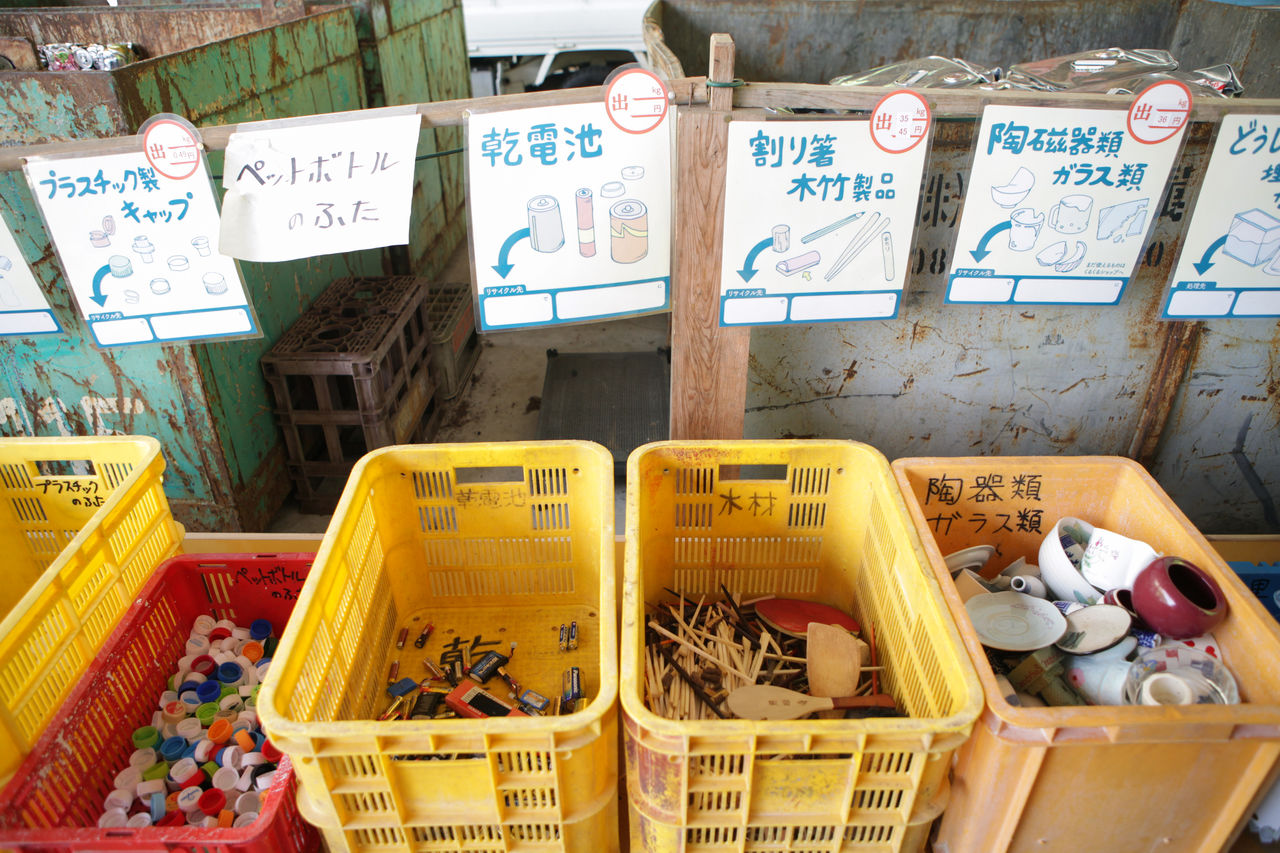 Sorting boxes are lined up by resource type at the Waste Station.
Sorting boxes are lined up by resource type at the Waste Station.
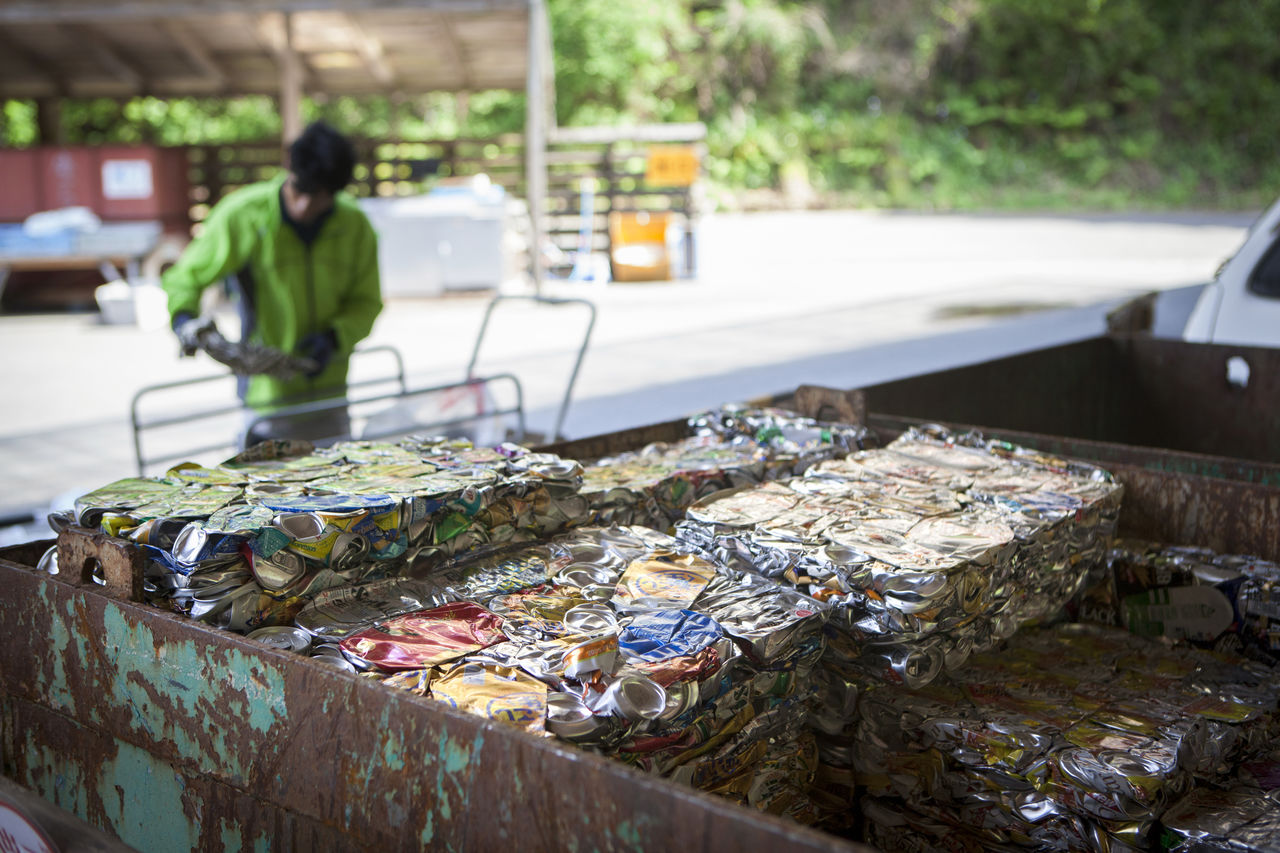 Cans are crushed by machine into space-efficient blocks of aluminum.
Cans are crushed by machine into space-efficient blocks of aluminum.
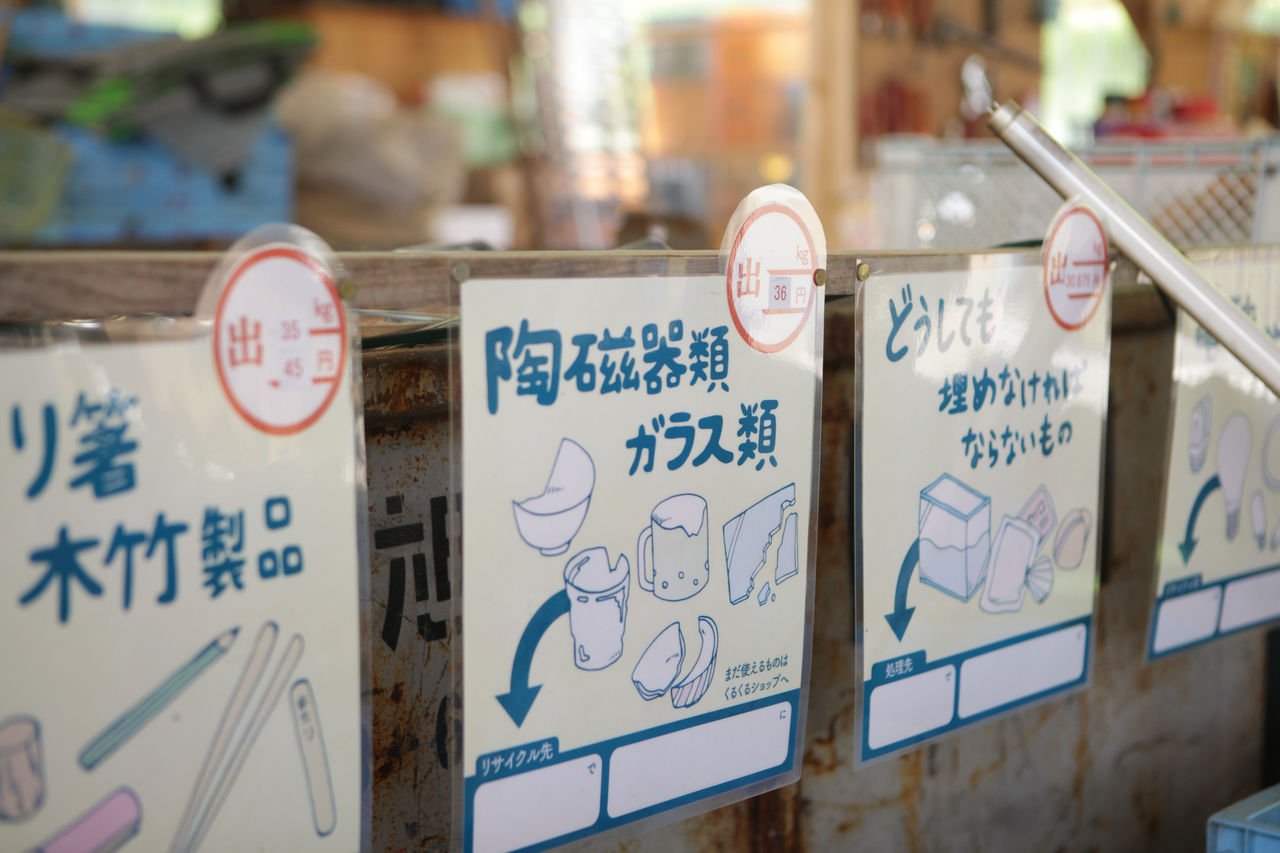 The displays show which materials are recycled where and into what, as well as what prices are paid for given materials or how much is charged for their collection.
The displays show which materials are recycled where and into what, as well as what prices are paid for given materials or how much is charged for their collection.
Comprehensive Approach Leads to 81% Recycling Rate
Kamikatsu has adopted a “Bring Your Own Resources” approach, asking residents to personally deliver their sorted waste. The town’s Waste Station is open from 7:30 am to 2:00 pm every day, except for three days around the New Year. Onsite staff assist with any difficulties in sorting of waste.
“I think some people come here because they look forward to talking with the staff,” Sakano says. “The whole town converges here, which makes it also a place for sparking community interaction.”
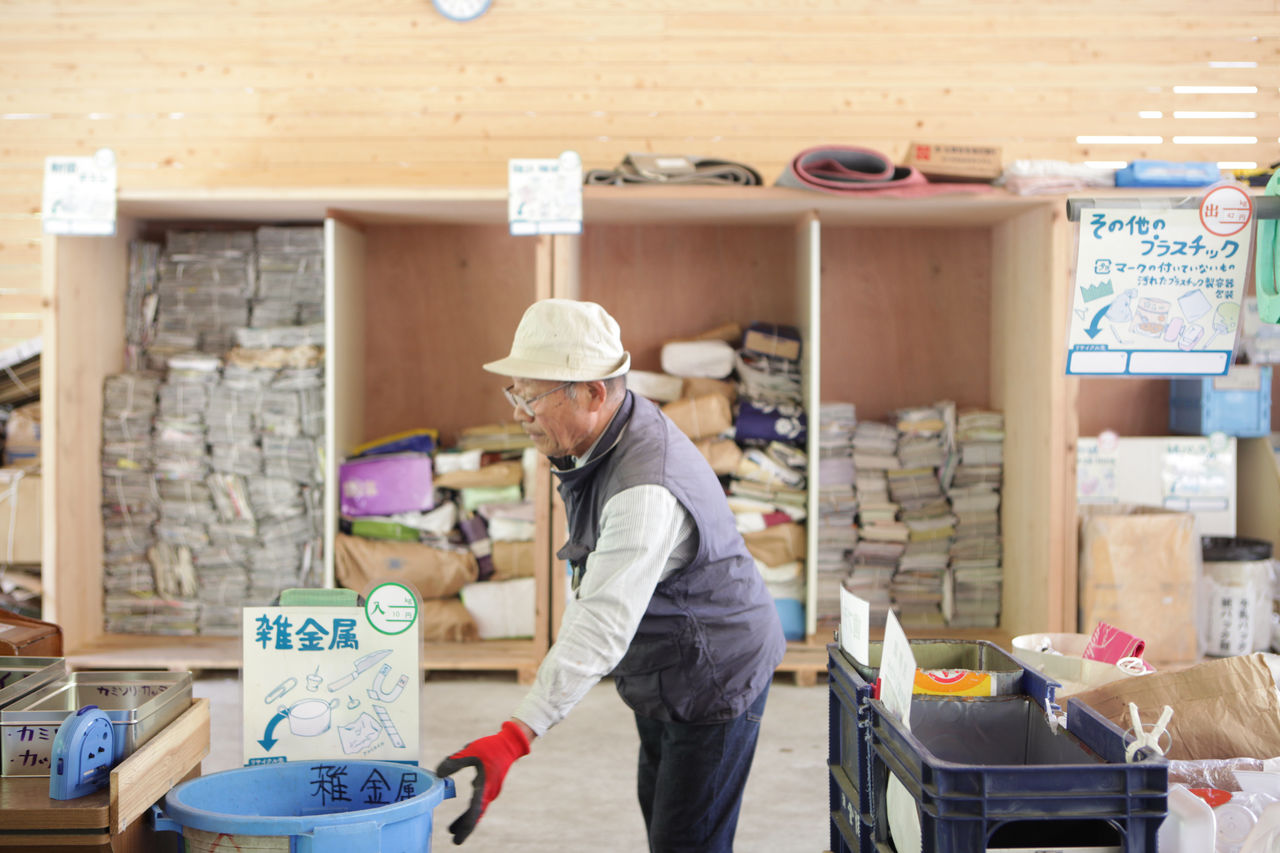 The Waste Station is kept neat, tidy, and hygienic.
The Waste Station is kept neat, tidy, and hygienic.
Sorted waste has grown from 34 types in 2002 to 45 types in 13 categories in 2015. For example, metals are sorted into five types, plastics into six types, and paper into nine types. Only a very few kinds of waste are incinerated, including such materials as PVC or rubber, as well as disposable diapers and feminine hygiene products.
The more care that is taken with sorting of resources, the higher the sale price of such materials on the market. Selling waste like paper or metals for cash brings in ¥2.5 million–¥3.0 million annually, which helps offset Kamikatsu’s waste disposal costs.
“Thanks to added onsite efforts, we’ve achieved an 81 percent recycling rate,” says Sakano, pointing to statistics published in the Ministry of the Environment’s 2016 General Survey on the State of Waste. “Now we’re contemplating the need to turn our attention to reusing and reducing waste as well,” says Sakano.
As part of its reuse and reduce initiatives, in 2017 Kamikatsu started a project that gives “cloth diaper starter kits” to local households with infants up to their first birthdays. Unlike disposable diapers, which have to be incinerated, cloth diapers can be washed and reused.
Efforts by Kamikatsu are ongoing to meet the challenge of achieving the stated goal of eliminating waste by 2020 without resorting to incinerators or landfills.
(Originally written in Japanese. Interview and article text by Sugimoto Kyōko. Photos by Namazu Masataka.)
